

Since we came to Tsuruoka, we have made many new friends. That sounds like the obligatory cheesey first-line to introducing people you've met in a new place, but honestly it's true. We don't even really have any enemies here.
Before we introduce them, though, we should give a short explanation of Japanese names and honorifics. In East Asian style, family names are first followed by given names. For example, Peter's name is often turned into "Lesperance Peter" to keep with this style. Additionally, honorifics are almost always added to the ends of names. The typical, somewhat generic, honorific is "san." When in doubt concerning a person's age or position, this is the default. Female children or women who are significantly younger than you can be addressed as "chan." Likewise, male children or men significantly younger than you are called "kun." Teachers, doctors, and certain other specialized positions are addressed as "sensei."
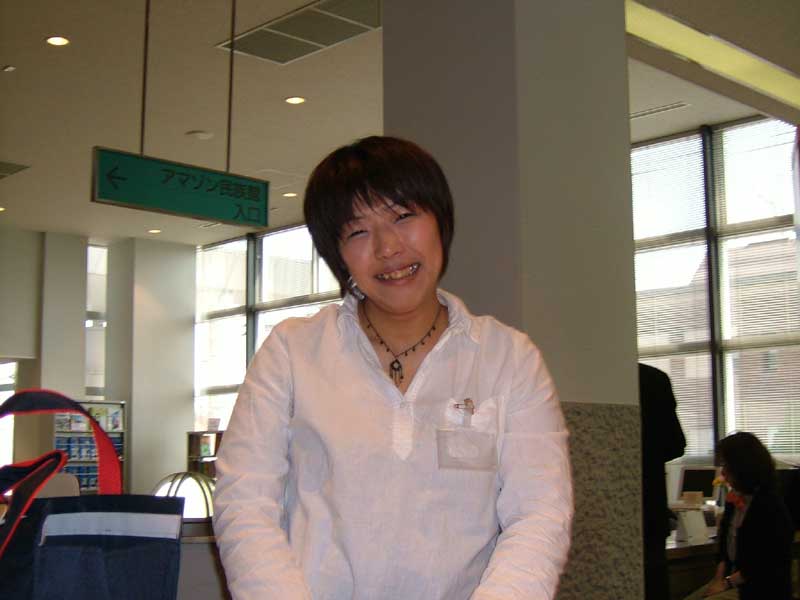
This is Baba Ai (we call her Ai-sensei, others usually call her Ai-chan). She is our Japanese teacher at the International Center in Tsuruoka. Ai speaks good English because she spent a bit of time in Australia as an assistant teacher of Japanese (Japanese is the most popular second language in Australian schools). Ai lives in Atsumi with her family, and her day job is helping with her father's tatami-mat making business. Ai also worked at Starbucks in Tokyo, so Kim and Ai share a special bond as ex-Starbucks employees.
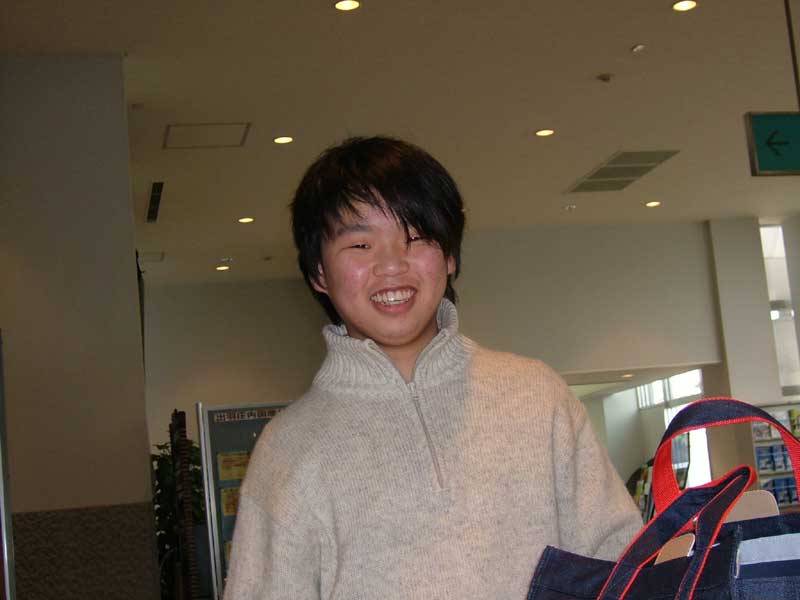
This is Kin-kun, who is not, in fact, Japanese but rather Chinese. He was our study partner in Japanese classes; however, he's advanced well ahead of us. We think he attends a Japanese school somewhere, which would account for his good progress. We keep getting passed in our classes by Chinese children, and we're not sure if it's easier to move from Chinese to Japanese, it's easier to learn language when you're still a kid, or maybe we're just stupid.
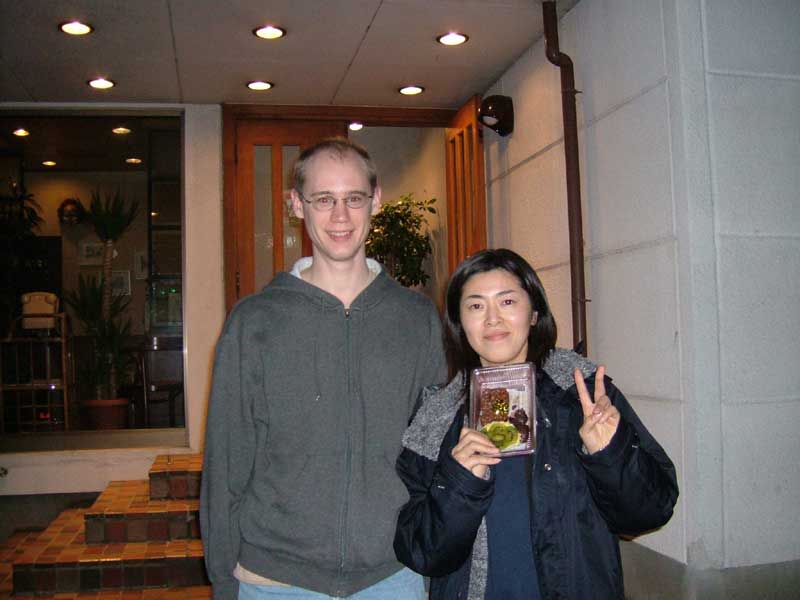
This, standing alongside scarey red-eyed Peter, is Oonuma Yuki-sensei. This year she taught English at Atsumi High School. To say goodbye to her, Peter and Kim took Oonuma-sensei out for rotating sushi (something that must be explained later), coffee, and gave her the candy she's holding in the picture. Flashing the victory/peace sign like Yuki is doing in this picture is very common in Japan when posing for a photo.
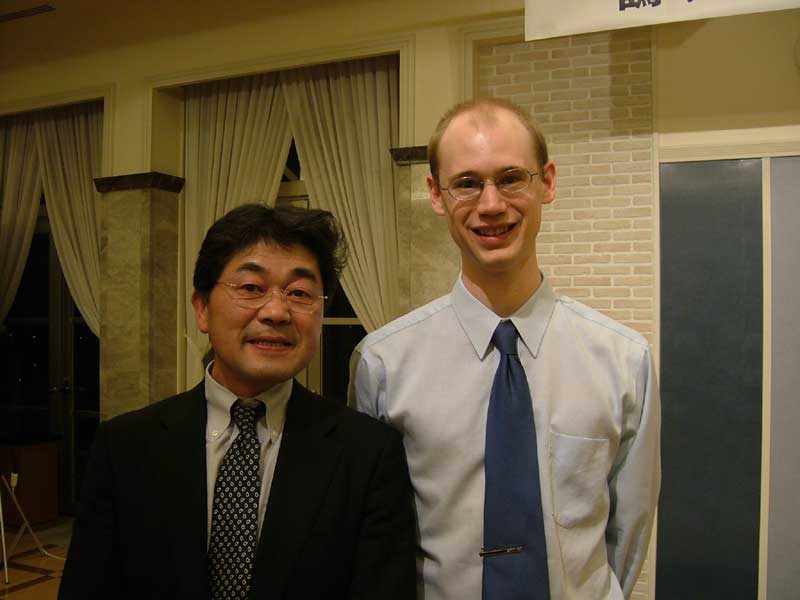
This is Hinata-sensei, another teacher who had to depart after our first year here. In Japanese public high schools, teachers are moved somewhat arbitrarily within the prefecture. Usually teachers will stay at one school three to seven years and then be assigned to a new school. They can request transfers and choose preferred locations; however, it's ultimately at the discretion of the principals and the prefectural board of education. Hinata-sensei looks a bit strange here, but this picture was taken at an "enkai"--a Japanese drinking-with-your-co-workers party. It's somewhat strange from the Western perspective, but it's really just a sanctioned version of what goes on in a lot of Western countries.
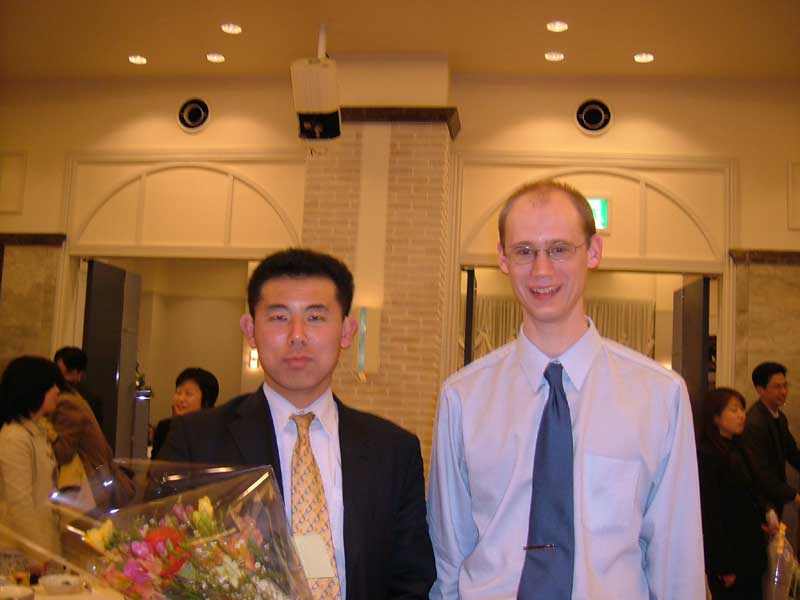
Here is Suzuki Takeshi-sensei. Usually he is addressed as "Takeshi-sensei" because Suzuki is too common of a last name. Takeshi-sensei was Peter's advisor and direct supervisor this year. He is a really good English speaker because he spent two years in a Masters program at the University of Kansas. He's also, incidentally, an avid fan of Kansas college basketball.
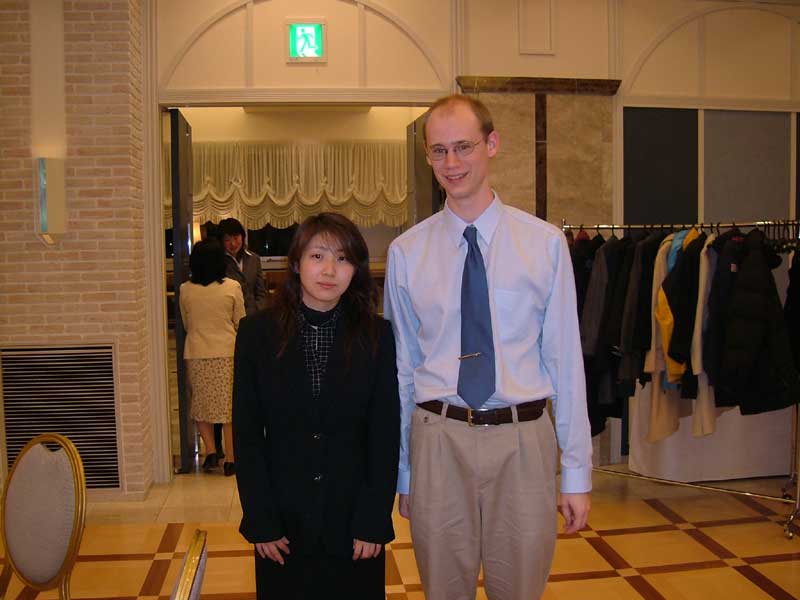
Next we have Gotou Masami-sensei (also called by her given name because of a common family name). Masami-sensei had to leave because she, like Oonuma-sensei, is a "part-time" teacher. This doesn't mean she only works part-time... she puts in the full obligatory 80 hour work week for Japanese teachers; however, the "part-time" designation indicates that the teacher has not passed the teaching examination. The teaching examination is a horrible nightmare. Just to give you an idea, 50 teachers in Yamagata Prefecture took the English teaching exam, and two passed.
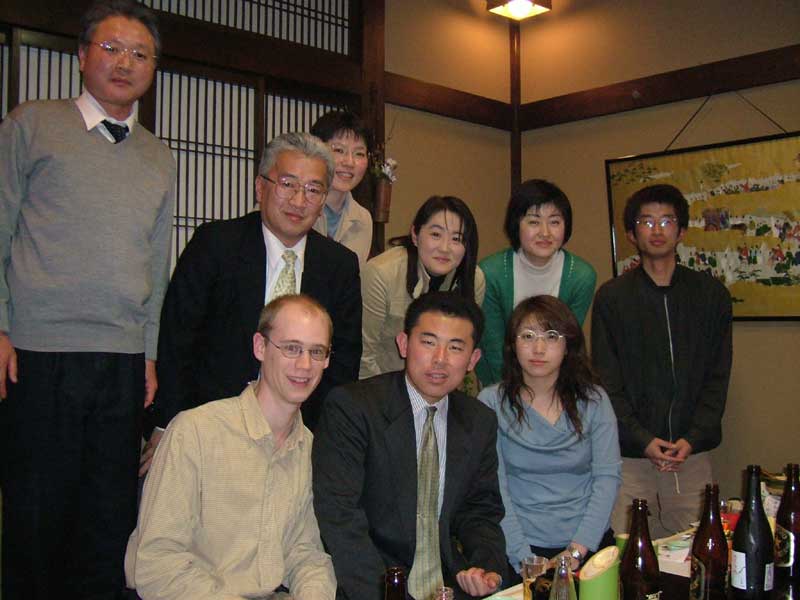
This is the English staff at Tsuruoka Central High School. From left to right, top to bottom: Eichi-sensei, Kazuaki-sensei, Tsunabuchi-sensei, Nozaki-sensei, Kanako-sensei, Sasaki-sensei, Peter, Takeshi-sensei, and Masami-sensei. One teacher is missing--Shimaya-sensei. Two new teachers will replace Takeshi-sensei and Masami-sensei this year.
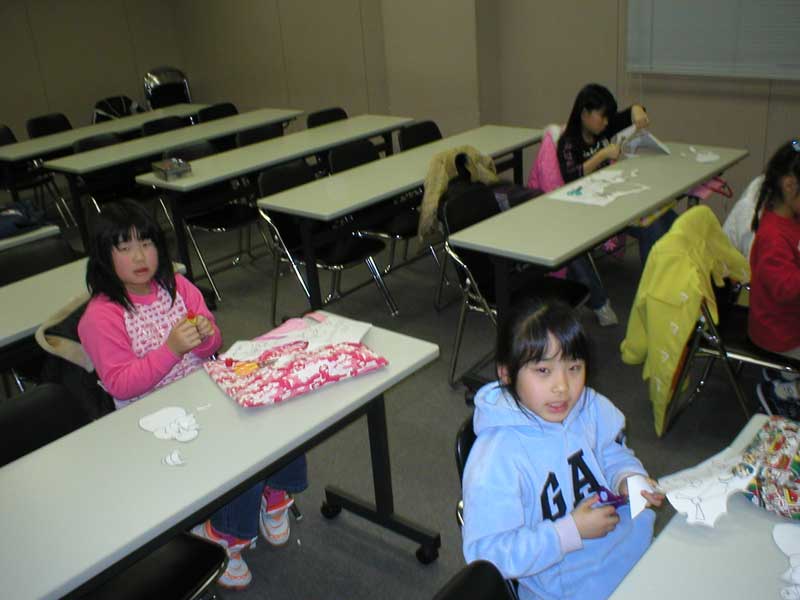
Here are some of the children from Peter's English class at the International Center.
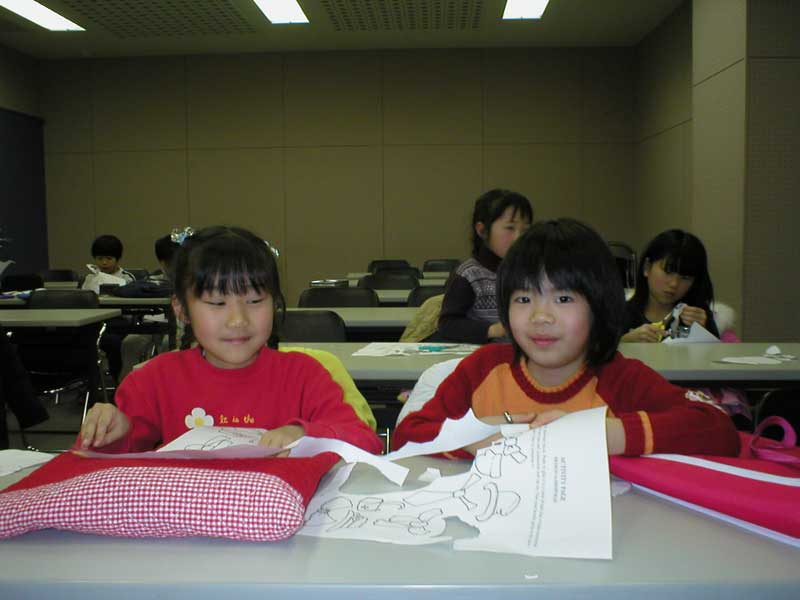
More children from class!
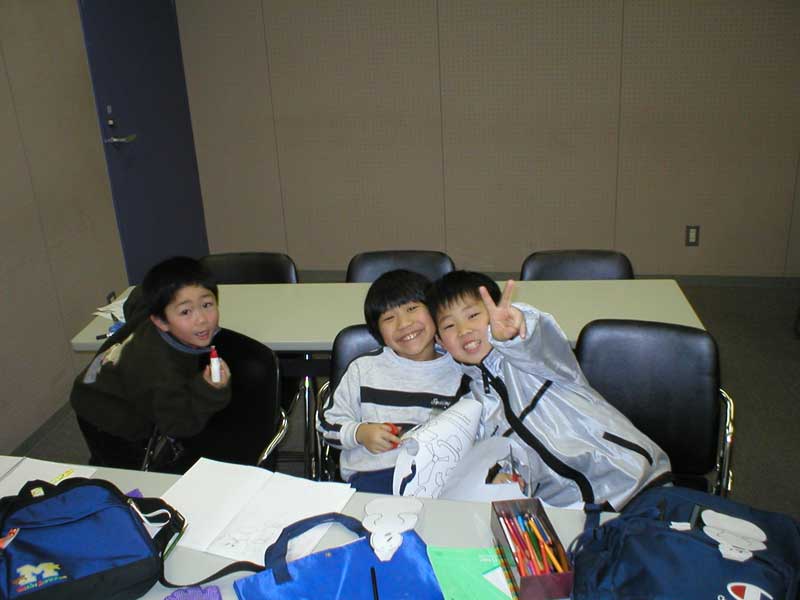
Some of the boys from Peter's class. They were a bit rowdy at times.
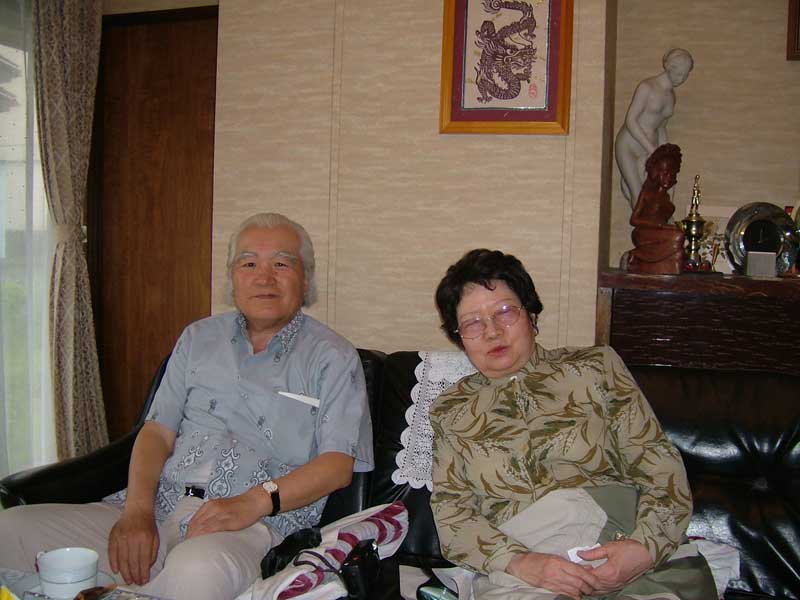
Here is Akiyama-san and his wife (Akiyama-san). Mr. Akiyama was a boat captain and thus learned some English going from port to port. He was our volunteer translator when we had to switch our International driving permits to Japanese licenses (quite the bureaucratic process and none to fun). This picture was taken at their home.
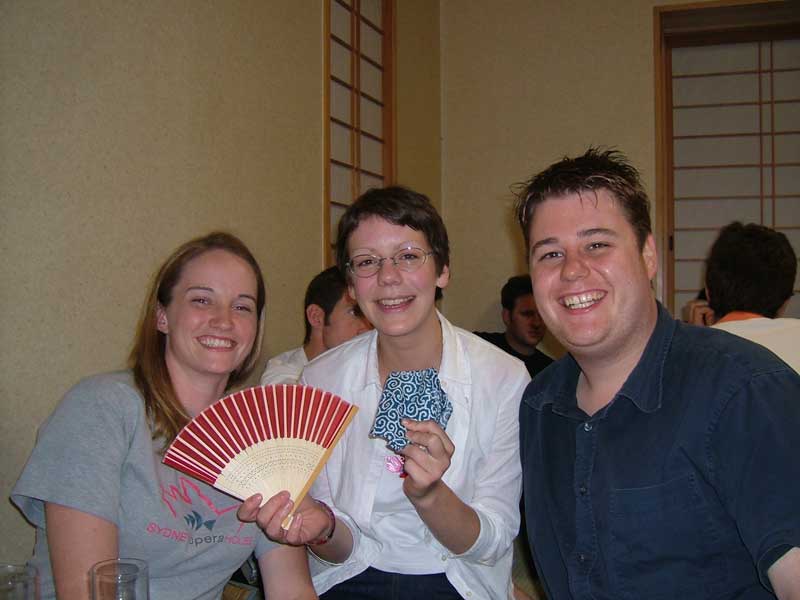
This is at a going away party for Christine. From left: Lauren, Christine, and Ben. Lauren and Christine are also assistant language teachers. Ben speaks fluent Japanese and thus works in an office doing translation and other really really important tasks.
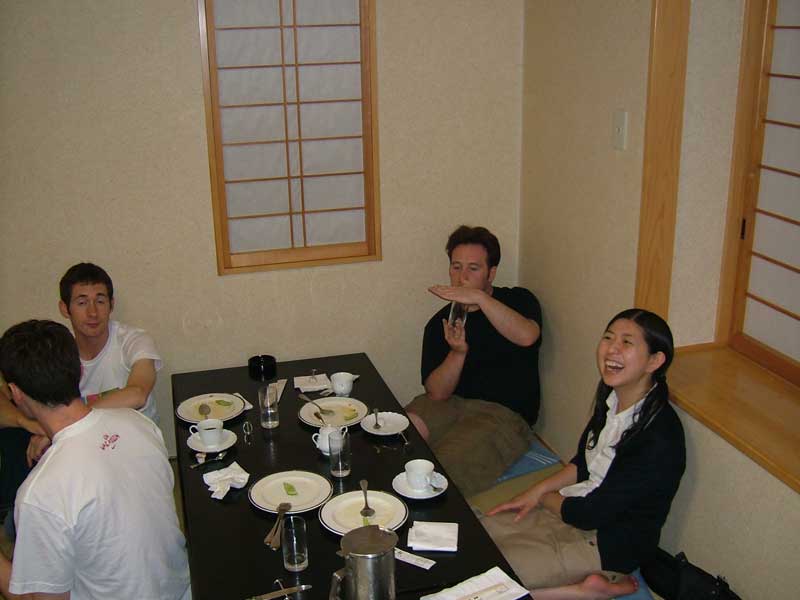
This isn't the best picture, but from left: Tom, Ed, Ian, Megumi. Ian and Tom will be leaving Japan in August 2004.
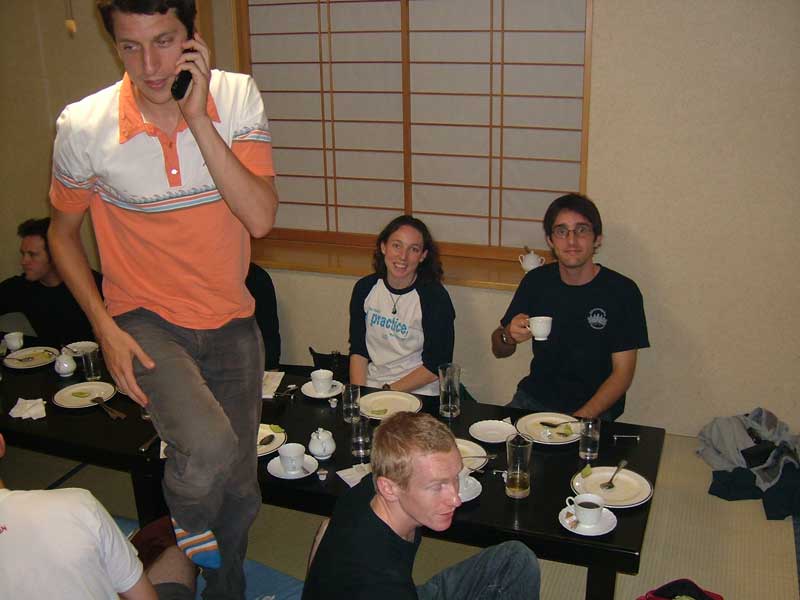
Again, at the going away party. From the left: Ian, Jay, Alisha, Ian, and Chris. Both Ians, Jay, and Chris are leaving Shonai in August 2004.
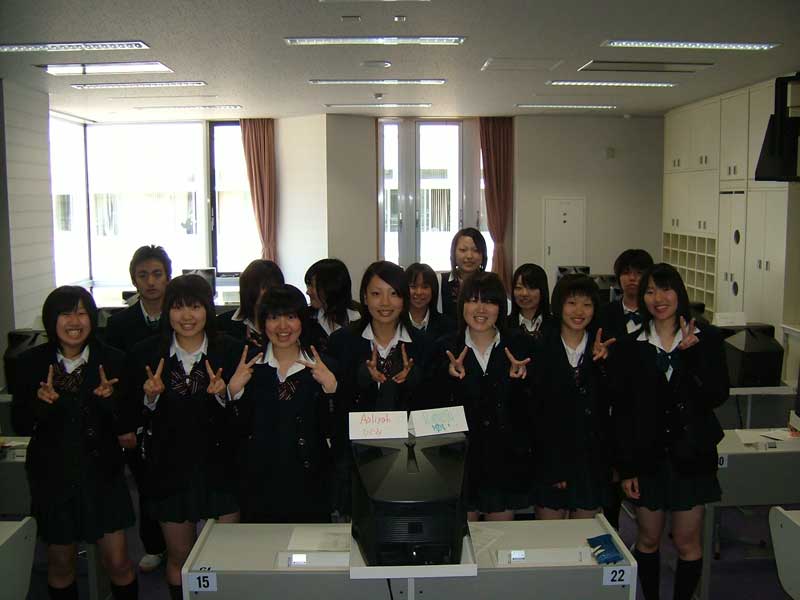
This is Peter's International Culture class at Tsuruoka chuou. These students are particularly interested in oral English. Most of these students will get jobs after high school. The students' names are, from left to right, Rie, Junpei, Miu, Ai (hiding her face), Aki, Yuko (laughing at Ai), Hidemi, Yuka, Mariko (in back), Yui, Sayuri, Saki, Eimi, and Marin.
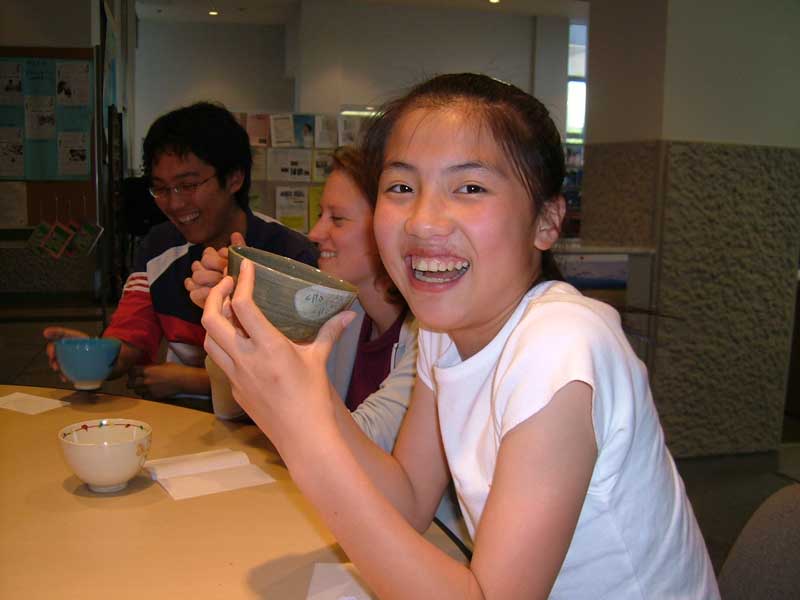
Here is an informal tea ceremony that happens every month at the cultural center (during our Japanese class). In the background is a student from China and Kim. In the foreground is Natsumi chan, who is also Chinese and lives in Atsumi. She is in our study group but is already surpassing us, due to the fact she has to go to school where all they speak is Japanese.
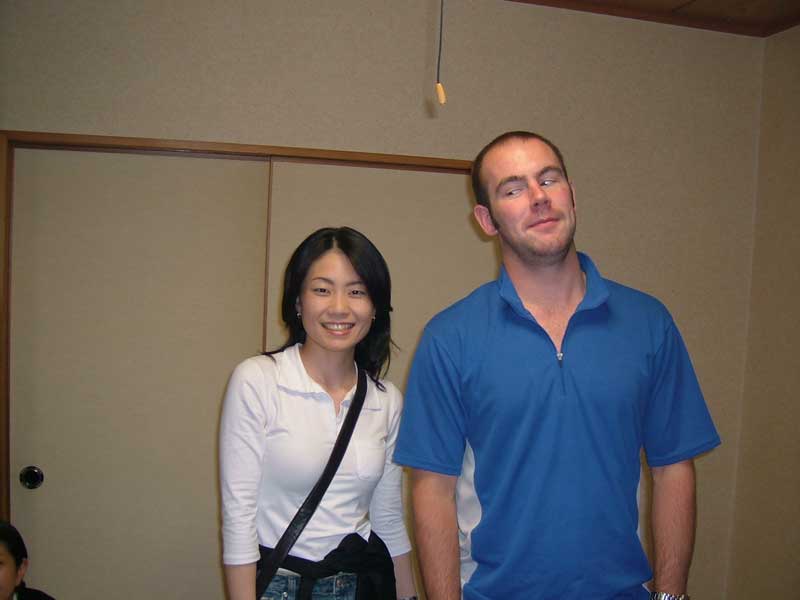
This is back at the farewell party and is a picture of Yasue and Ronan. Yasue was a member of Kim's host family in Yamagata City and she is in her second year teaching high school English.
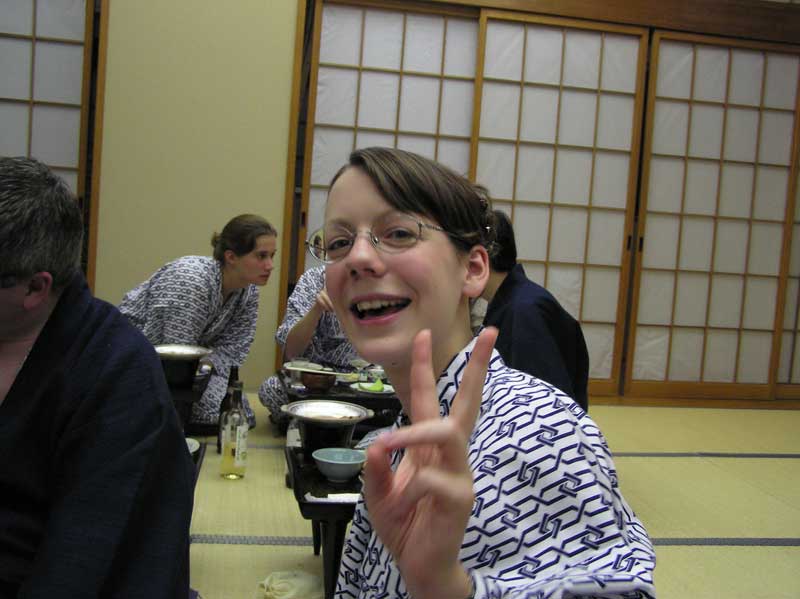
Here is another picture of Zao orientation, back in August 2003. This is Chrisine in a yukata, traditional summer robe.
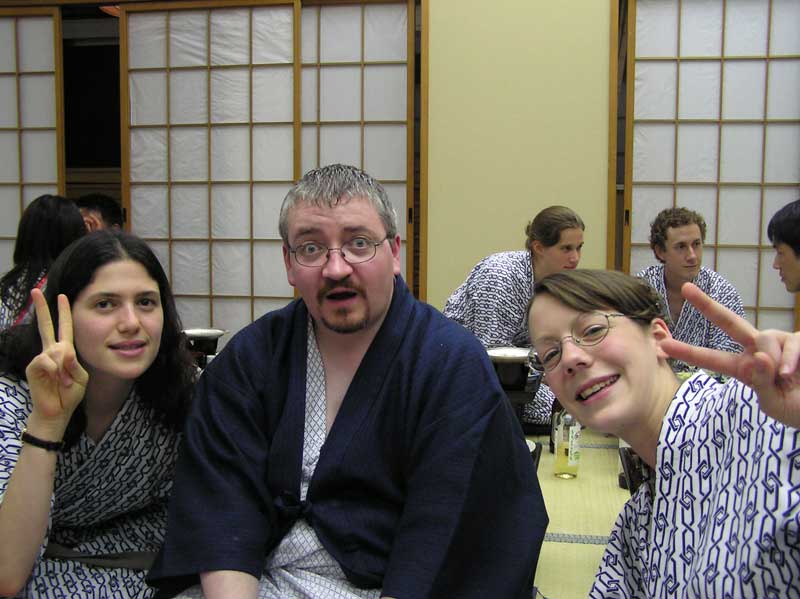
Here is Reecie, Eamon, and Christine at Zao.
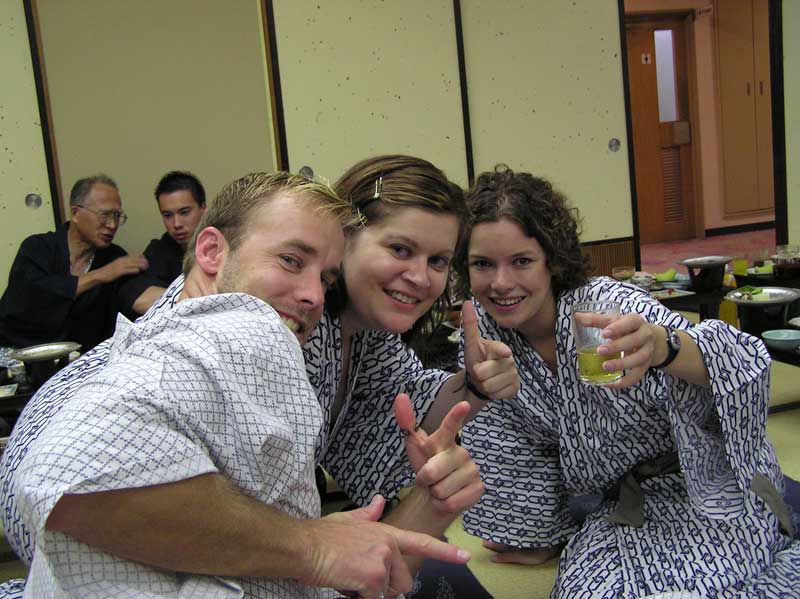
This is Scott, Monique, and Erin at Zao. Scott and Monique live in Shonai. Erin was in Shonai for 2003-4 but has returned to Canada.
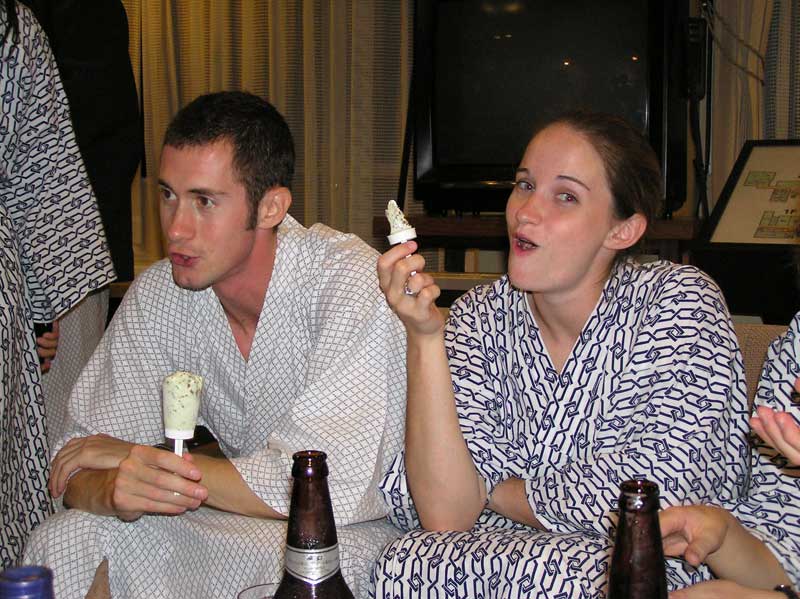
This is Ed and Lauren at Zao. By the way, wearing the yukata was mandatory, not a choice. However, it was kind of fun.
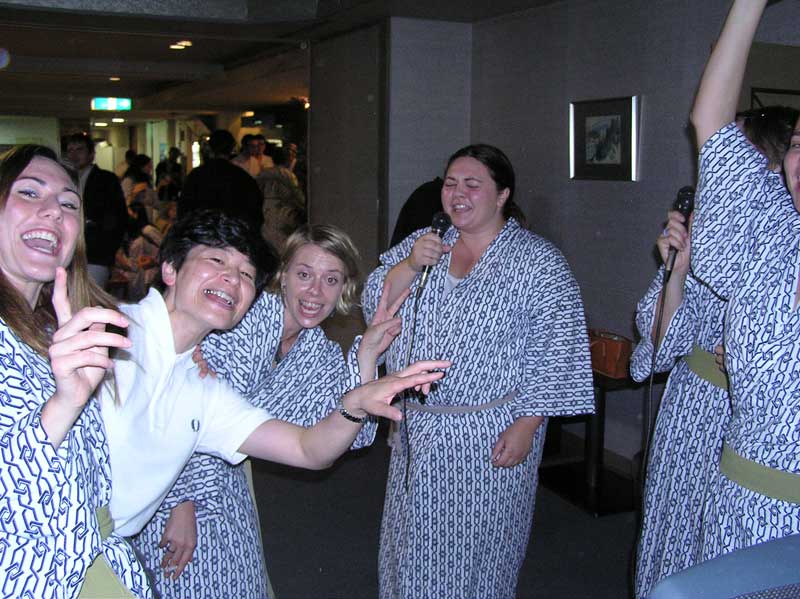
Here is some karaoke at Zao with Katherine, Aoyagi sensei, Gabbie, and Melissa. Melissa is a really good singer.
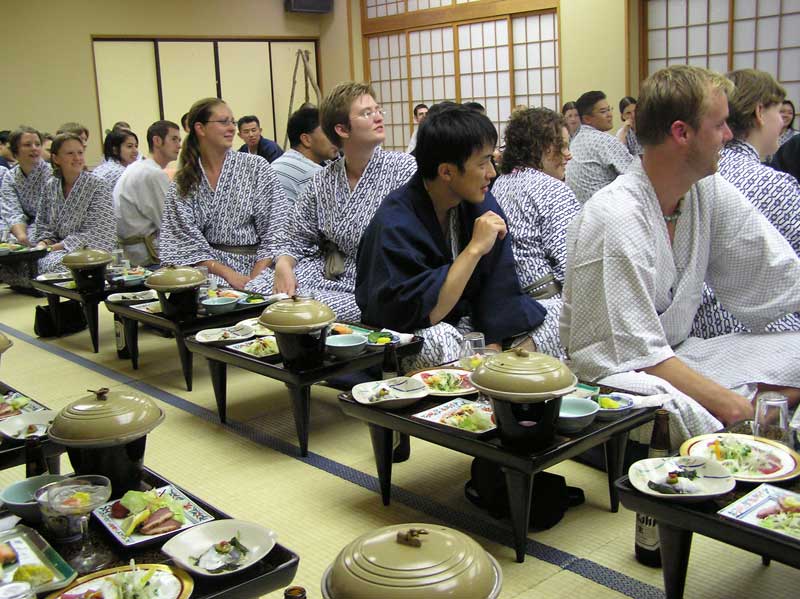
Zao was where we first experienced an enakai (work party). Basically, Mt. Zao is a famous hot springs and ski resort. Summer is the off season. Three weeks after we arrived in Japan, we had to go to a 3 day orientation at Zao, mostly to learn enough etiquette not to embarass ourselves too much at our schools. Thus, this enkai (dinner-drinking party) was held to give us an idea of what is appropriate and what isn't in a relaxed environment before we tackled the real thing on our own. It was fun.
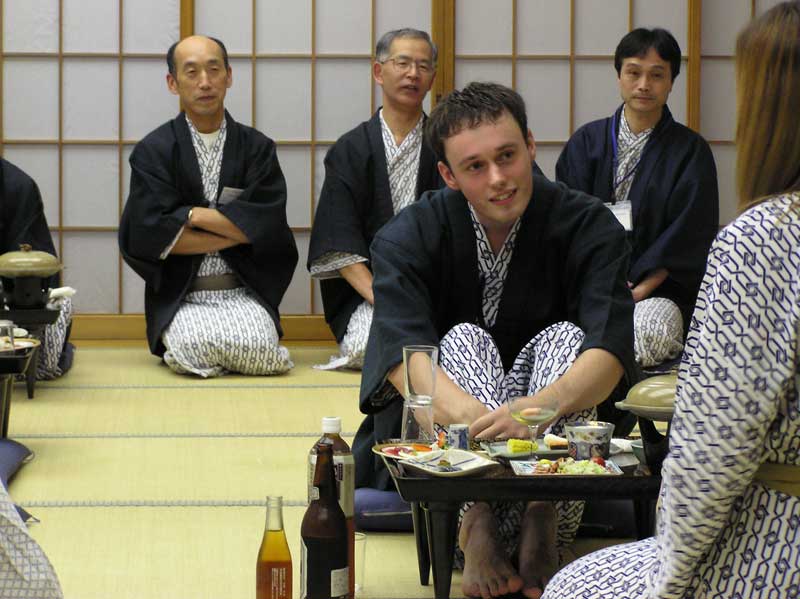
Here is Tom at Zao. Tom was one of the trainers at Zao, being a second year English teacher in Japan. In the background are some important people from the Prefectural government education board. Note the way the men in the background sit. This is the formal seiza ("cease-up") style which is required at some parts of an enkai. Kim can sit seiza for about 15 minutes before she starts to loose feeling in her legs. However, sitting seiza is difficult for many Japanese people as well. At the goodbye enkai at Kim's school, teachers sat seiza for so long that when one young man had to give his speech, he could not stand up properly!